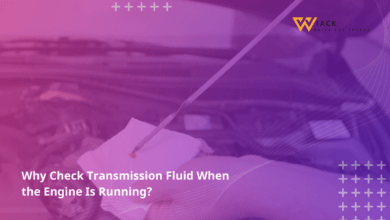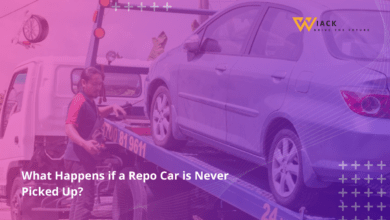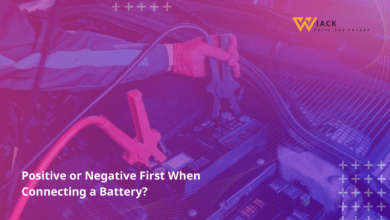When I Buy a Car from a Private Seller Can I Drive it Home?

Did you know that in 16 states, it’s legally required to have a bill of sale when purchasing a car from a private seller? This surprising fact highlights the importance of understanding the legal and practical aspects of buying a car from an individual rather than a dealership. Whether you’re a first-time buyer or an experienced car owner, navigating the process of purchasing a vehicle from a private seller can be both exciting and daunting.
In this comprehensive guide, we’ll explore the ins and outs of buying a car from a private seller, with a particular focus on the crucial question: Can I drive it home? We’ll delve into the legalities, practical steps, and alternatives to ensure you make an informed and safe decision when purchasing your next vehicle.
Understanding the Legalities
When you’re eager to get behind the wheel of your newly purchased car, it’s crucial to understand the legal implications of driving it home immediately after a private sale. Let’s break down the key legal considerations you need to be aware of.
Is it Legal to Drive a Car Home Before Completing the Sale?
The short answer is: it depends. The legality of driving a car home immediately after purchasing it from a private seller varies by state and depends on several factors. Here’s what you need to know:
- Registration and plates: In most states, you cannot legally drive a car without proper registration and license plates. When you buy from a private seller, the existing plates typically belong to the seller and should be removed before you take possession of the vehicle.
- Insurance: It’s illegal to drive without insurance in most states. You’ll need to have insurance coverage for the new vehicle before you can legally drive it.
- Temporary permits: Some states offer temporary permits or tags that allow you to drive a newly purchased vehicle for a limited time while you complete the registration process. For example, in California, you may be eligible for a Temporary Operating Permit (TOP) that allows you to drive the vehicle while waiting for your permanent registration.
- Title transfer: While you may have paid for the car, you’re not legally the owner until the title is transferred into your name. This process usually requires a visit to the Department of Motor Vehicles (DMV) or equivalent agency in your state.
- State-specific rules: Some states have specific rules for private car sales. For instance, in New York, you can’t get temporary tags but must obtain a transporter license plate or in-transit vehicle permit.
Given these factors, it’s generally not advisable to drive the car home immediately after purchase unless you’ve taken the necessary steps to ensure you’re doing so legally.
What Happens if You Get Into an Accident Before Transferring Ownership?
This scenario is a prime example of why it’s crucial to understand the legalities of driving a newly purchased car. If you get into an accident before the title is officially transferred, you could find yourself in a complex legal situation. Here’s what you need to be aware of:
- Liability issues: If the car is still registered in the seller’s name, they could potentially be held liable for damages caused in an accident. This is why many sellers are hesitant to let buyers drive away before completing the title transfer.
- Insurance complications: Your existing auto insurance may not automatically cover a newly purchased vehicle. If you haven’t added the new car to your policy, you might not be covered in the event of an accident.
- Legal gray area: Without proper documentation of the sale, it might be difficult to prove that you were in rightful possession of the vehicle at the time of the accident.
- Financial responsibility: Even if you can prove you purchased the vehicle, you might be personally liable for any damages or injuries if you were driving without proper insurance or registration.
A real-world example illustrates the potential complications. In one case, a buyer purchased a car from a private seller but got into an accident before transferring the title. The seller’s insurance company initially denied the claim because the seller claimed they had already sold the car. However, without proper documentation of the sale, the situation became a legal mess, with both parties potentially facing liability.
This scenario underscores the importance of completing all necessary paperwork and obtaining proper insurance before driving your newly purchased vehicle.
The Importance of a Bill of Sale
A bill of sale is a crucial document in private car sales, serving as a record of the transaction and protecting both the buyer and seller. Here’s why it’s so important:
- Legal proof of sale: The bill of sale serves as evidence that the transaction took place, which can be crucial if any disputes arise later.
- Required for registration: Many states require a bill of sale to register the vehicle in your name.
- Details of the transaction: A proper bill of sale includes important information such as:
- The vehicle’s make, model, year, and VIN (Vehicle Identification Number)
- The agreed-upon sale price
- The date of the sale
- Names and addresses of both the buyer and seller
- The odometer reading at the time of sale
- Protection for both parties: For the seller, it provides proof that they no longer own the vehicle. For the buyer, it confirms the details of their purchase.
- Tax purposes: The bill of sale can be used to calculate any applicable sales tax when registering the vehicle.
To ensure your bill of sale is comprehensive and legally sound, consider including the following statement: “The vehicle is sold as-is with no warranties, either expressed or implied.” This protects the seller from future claims about the vehicle’s condition.
Remember, while a handwritten bill of sale can be legally binding, it’s often better to use a standardized form. Many states provide templates on their DMV websites, ensuring you include all necessary information.
By understanding these legal aspects, you’re better prepared to navigate the process of buying a car from a private seller. In the next section, we’ll explore the practical steps you can take to ensure a safe and legal purchase.
Practical Steps for a Safe and Legal Purchase
Now that we’ve covered the legal considerations, let’s dive into the practical steps you should take when buying a car from a private seller. These steps will help ensure that you can safely and legally drive your new purchase home.
Step 1: Inspect the Vehicle Thoroughly
Before you even consider driving the car home, it’s crucial to ensure it’s in good working condition. Here’s how to approach the inspection:
- Visual inspection: Look for any obvious signs of damage or wear. Check for rust, dents, or mismatched paint that could indicate previous repairs.
- Mechanical inspection: If you’re not mechanically inclined, consider hiring a professional mechanic to inspect the vehicle. They can identify potential issues that might not be immediately apparent.
- Test drive: Always take the car for a test drive. Pay attention to how it handles, any unusual noises, and how well the brakes work.
- Check all features: Test all the car’s features, including air conditioning, radio, power windows, and any advanced technology systems.
- Under the hood: Even if you’re not an expert, take a look under the hood. Check fluid levels and look for any obvious leaks or worn belts.
Remember, this inspection is not just about deciding whether to buy the car. It’s also about ensuring the vehicle is safe to drive home if you decide to purchase it.
Step 2: Verify the Vehicle’s History
Before you commit to buying the car, it’s essential to verify its history. This step can reveal important information about the vehicle’s past that might affect its value or safety.
- Vehicle history report: Obtain a vehicle history report using the car’s VIN. Services like Carfax or AutoCheck can provide information about previous accidents, ownership history, and service records.
- Title check: Verify that the seller has a clean title to the vehicle. A “clean” title means the car hasn’t been declared a total loss by an insurance company.
- Lien check: Ensure there are no outstanding liens on the vehicle. If there are, the seller needs to clear these before transferring ownership to you.
- Odometer verification: Cross-check the current odometer reading with the vehicle history report to ensure it hasn’t been tampered with.
- Recall information: Check if the vehicle has any open recalls. You can do this for free on the National Highway Traffic Safety Administration’s website.
By verifying the vehicle’s history, you’re not only protecting your investment but also ensuring that you’re aware of any potential issues that could affect your ability to legally drive the car home.
Step 3: Obtain a Title and Registration
Once you’ve decided to purchase the car, the next crucial step is to ensure you can legally drive it. This primarily involves obtaining the title and registration.
- Title transfer: The seller should sign over the title to you. Make sure all fields are filled out correctly and that the seller’s signature matches the name on the title.
- Visit the DMV: In most cases, you’ll need to visit your local DMV to complete the title transfer and register the vehicle in your name. Bring the signed title, bill of sale, and proof of insurance.
- Pay necessary fees: Be prepared to pay title transfer fees, registration fees, and any applicable sales tax.
- Temporary registration: If you can’t complete the full registration process immediately, ask about temporary registration options. As mentioned earlier, some states offer temporary permits or tags that allow you to legally drive the car for a short period while you complete the registration process.
- License plates: In most cases, you’ll need to obtain new license plates for the vehicle. The seller should remove their plates before you take possession of the car.
Remember, the specific requirements and processes can vary by state. It’s a good idea to check your state’s DMV website or call them directly to understand exactly what you need to do.
Step 4: Secure Proper Insurance Coverage
Driving without insurance is not only illegal in most states but also extremely risky. Here’s how to ensure you’re properly insured:
- Contact your insurance provider: Before you finalize the purchase, contact your insurance company to add the new vehicle to your policy. Many insurers offer a grace period of 7-30 days to add a new car to an existing policy, but it’s best to do this as soon as possible.
- Provide vehicle information: You’ll need to provide your insurance company with the car’s make, model, year, and VIN.
- Consider coverage options: Decide what level of coverage you want for your new vehicle. If you’re financing the purchase, the lender may require full coverage insurance.
- Get proof of insurance: Make sure you have proof of insurance before you drive the car. This could be a physical insurance card or digital proof on your smartphone, depending on your state’s laws.
- Understand your policy: Make sure you understand what your policy covers, especially during the transition period between buying the car and adding it to your policy.
Having proper insurance coverage is not just about legal compliance; it’s about protecting yourself financially in case of an accident.
Step 5: Negotiate and Agree on a Purchase Price
Before you can drive your new car home, you need to agree on a price with the seller. Here are some tips for effective negotiation:
- Research fair market value: Use resources like Kelley Blue Book or NADA Guides to determine the fair market value of the vehicle based on its make, model, year, and condition.
- Consider all costs: Remember to factor in any necessary repairs or maintenance when negotiating the price.
- Be prepared to walk away: Don’t feel pressured to agree to a price you’re not comfortable with. Be willing to walk away if you can’t reach a fair agreement.
- Get the agreement in writing: Once you’ve agreed on a price, make sure it’s clearly stated in the bill of sale.
- Discuss payment method: Agree on an acceptable payment method. Cashier’s checks or electronic transfers are often safer than cash for large transactions.
Remember, the negotiation process is not just about getting the lowest price possible. It’s about reaching a fair agreement that both you and the seller are comfortable with.
Step 6: Complete the Bill of Sale
The final step before you can consider driving your new car home is completing the bill of sale. This document is crucial for several reasons:
- Legal record: It serves as a legal record of the transaction.
- Required for registration: Many states require a bill of sale to register the vehicle.
- Protects both parties: It protects both you and the seller by clearly stating the terms of the sale.
Here’s what to include in the bill of sale:
- Names and addresses of both buyer and seller
- Vehicle details (make, model, year, VIN)
- Purchase price
- Date of sale
- Odometer reading
- Signatures of both parties
Some states provide standard bill of sale forms, which can be helpful to ensure you include all necessary information.
By following these practical steps, you’re setting yourself up for a smooth and legal transition of ownership. However, even with all these steps completed, there may be situations where driving the car home immediately isn’t the best option. In the next section, we’ll explore some alternatives to consider.
Alternatives to Driving the Car Home Immediately
Even after completing all the necessary steps, there might be situations where driving the car home immediately isn’t possible or advisable. Let’s explore some alternatives that can help you safely and legally get your new purchase home.
Option 1: Have the Car Transported
If you’re unable to drive the car home yourself, or if you’re not comfortable doing so, having the car transported can be a great option. Here’s what you need to know:
- Professional auto transport services: These companies specialize in moving vehicles. They can transport your car on a flatbed truck or in an enclosed trailer, depending on your preferences and budget.
- Cost considerations: While this option might be more expensive than driving the car yourself, it can be worth it for peace of mind, especially if you’re purchasing a car from a distant location.
- Insurance coverage: Make sure the transport company has adequate insurance to cover any potential damage during transit.
- Scheduling: Book the transport service in advance, coordinating with the seller for pickup.
- Inspection: Before and after transport, thoroughly inspect the vehicle and document its condition to ensure no damage occurred during transit.
Using a transport service can be particularly beneficial if you’re buying a classic or luxury car, or if the vehicle isn’t in reliable driving condition.
Option 2: Request a Temporary Permit
Many states offer temporary permits or tags that allow you to legally drive your newly purchased car for a short period while you complete the registration process. Here’s what you need to know about temporary permits:
- Availability: Not all states offer temporary permits, and the rules can vary significantly between states that do. For example, California offers a Temporary Operating Permit (TOP) for certain situations.
- Duration: Temporary permits typically last for a short period, often 30 to 60 days. In some cases, like with California’s biennial smog certification TOP, it can be valid for up to 60 days.
- Requirements: To obtain a temporary permit, you’ll usually need to provide:
- Proof of insurance
- Bill of sale
- Vehicle title (signed over to you)
- Valid ID
- Payment for permit fees
- Limitations: Temporary permits often come with restrictions. For example, they may only be valid for driving the car directly home or to a repair shop.
- Application process: In most cases, you’ll need to visit your local DMV office to apply for a temporary permit. Some states may offer online applications for certain types of permits.
Here’s an example of how temporary permits work in different states:
- In California, you can get a TOP for various reasons, including when you’ve paid all registration fees but haven’t received your plates or stickers yet.
- In New York, instead of temporary tags, you can get a transporter license plate or in-transit vehicle permit.
- In Colorado, temporary tags can be issued for up to 60 days from the date of purchase.
Remember, even with a temporary permit, you’ll need to complete the full registration process before the permit expires.
By considering these alternatives, you can ensure that you’re able to get your newly purchased car home safely and legally, even if driving it immediately after purchase isn’t an option. In the next section, we’ll explore some additional considerations to keep in mind when buying a car from a private seller.
Additional Considerations
When buying a car from a private seller, there are several other factors to consider beyond the immediate question of whether you can drive it home. Let’s explore some of these additional considerations to ensure you’re fully prepared for your private car purchase.
Financing Options for Private Car Purchases
While many people pay cash when buying from a private seller, financing is still an option. Here’s what you need to know:
- Personal loans: Many banks and credit unions offer personal loans that can be used for car purchases. These often have lower interest rates than traditional auto loans for used cars.
- Online lenders: There are several online lenders that specialize in loans for private party car purchases. These can often provide quick approval and competitive rates.
- Credit unions: If you’re a member of a credit union, they may offer favorable rates for auto loans, even for private party purchases.
- Peer-to-peer lending: Platforms like Prosper or LendingClub can be options for financing a private car purchase.
- Home equity loans: If you own a home, you might consider using a home equity loan or line of credit to finance your car purchase. However, be cautious with this option as it puts your home at risk if you can’t make the payments.
When considering financing, keep these points in mind:
- Compare rates from multiple lenders to get the best deal.
- Be aware that interest rates for used car loans are often higher than those for new cars.
- Some lenders may have restrictions on the age or mileage of the car they’re willing to finance.
- Always read the fine print and understand all terms before signing any loan agreement.
Negotiating with Private Sellers
Negotiating with a private seller can be quite different from haggling at a dealership. Here are some tips to help you navigate this process:
- Do your research: Know the fair market value of the car before you start negotiating. Use resources like Kelley Blue Book or NADA Guides.
- Inspect thoroughly: Use any issues you find during your inspection as negotiating points. For example, if the car needs new tires soon, factor that into your offer.
- Be respectful: Remember, this is likely someone’s personal vehicle. Approach the negotiation with respect and courtesy.
- Use cash as leverage: If you’re able to pay cash, mention this. Many sellers prefer cash deals for their simplicity.
- Be prepared to walk away: If you can’t reach a fair agreement, be willing to walk away. There are always other cars available.
- Consider the seller’s perspective: Understanding the seller’s motivations can help you negotiate more effectively. Are they in a hurry to sell? Are they emotionally attached to the car?
Remember, the goal is to reach a fair price that both you and the seller are happy with.
Common Scams to Watch Out For
Unfortunately, private car sales can sometimes be targets for scams. Here are some red flags to watch out for:
- Title issues: Be wary if the seller doesn’t have the title or if the name on the title doesn’t match the seller’s name.
- Pressure tactics: If the seller is pressuring you to make a decision quickly, this could be a red flag.
- Too good to be true: If the price seems unusually low for the car’s make, model, and condition, be cautious.
- Refusal of inspection: If the seller won’t allow you to have the car inspected by a mechanic, this is a major warning sign.
- Curbstoning: This is when a dealer poses as a private seller to avoid regulations. Be suspicious if the seller has multiple cars for sale.
- VIN cloning: This is when a stolen car is given a VIN from a similar, legitimate car. Always check the VIN against the vehicle’s registration and title.
To protect yourself:
- Always meet the seller in a safe, public place.
- Verify the seller’s identity and address.
- Never wire money or use gift cards for payment.
- If possible, complete the transaction at your local DMV or bank.
Post-Purchase Considerations
After you’ve successfully purchased and brought your new car home, there are a few more things to keep in mind:
- Complete registration: If you haven’t already, make sure to complete the full registration process as soon as possible.
- Transfer warranty: If the car is still under warranty, make sure to transfer it into your name.
- Schedule maintenance: Even if the car seems to be in good condition, it’s a good idea to have it serviced soon after purchase.
- Keep records: Start a file for your new car, including all documents from the sale and any maintenance records.
- Consider additional protection: You might want to look into extended warranty options or mechanical breakdown insurance for added peace of mind.
By keeping these additional considerations in mind, you’ll be well-prepared to navigate the process of buying a car from a private seller. Remember, while the question “When I buy a car from a private seller can I drive it home?” is important, it’s just one part of the larger process of making a safe, legal, and satisfying private car purchase.
In conclusion, buying a car from a private seller can be a great way to find a good deal on a used vehicle. However, it’s crucial to approach the process with caution and thorough preparation. From understanding the legalities of driving your new purchase home, to taking practical steps for a safe transaction, to being aware of financing options and potential scams, there’s a lot to consider.
Remember these key points:
- In most cases, you’ll need to secure proper registration and insurance before legally driving your new car home.
- A thorough inspection and vehicle history check are crucial before making a purchase.
- Always complete a detailed bill of sale to protect both you and the seller.
- Consider alternatives like car transport or temporary permits if immediate driving isn’t possible.
- Be prepared to negotiate, but always be willing to walk away if the deal doesn’t feel right.
By following the advice in this guide, you’ll be well-equipped to navigate the process of buying a car from a private seller. Whether you’re able to drive your new purchase home immediately or need to make alternative arrangements, the most important thing is that you end up with a car that meets your needs and budget, acquired through a safe and legal transaction.
Happy car hunting, and may your new ride bring you many miles of joy and reliable transportation!
Get the latest car news, reviews, and prices at Wiack.com. Your one-stop destination for all things automotive.





